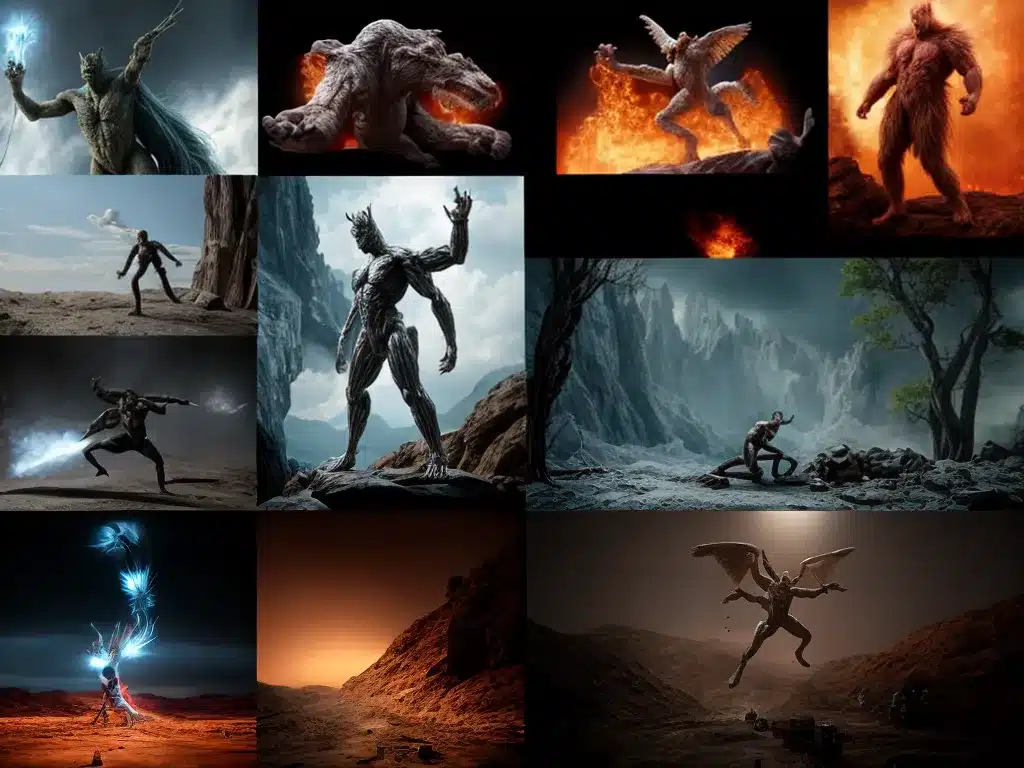Visual effects (VFX) have become an integral part of Hollywood blockbuster movies. VFX studios work tirelessly behind the scenes to create jaw-dropping illusions that transport audiences into unbelievable worlds. VFX breakdowns give us a glimpse into how these stunning effects are achieved by talented VFX artists.
What Are VFX Breakdowns?
VFX breakdowns showcase the process of constructing visual effects shots. They expose the green screens, CGI characters, virtual environments, and other elements that combine to create mind-blowing movie magic.
VFX breakdowns typically show side-by-side comparisons of the original shot filmed on set versus the finished shot after VFX enhancement. This reveals the extensive digital alterations and manipulations required to achieve the desired look.
Here are some examples of what VFX breakdowns demonstrate:
-
Green Screen Replacement – Actors filmed against green screens to be composited into CG backdrops later. Breakdowns show the blank green screen shot.
-
CGI Characters – VFX artists build photo-real 3D models of imaginary creatures and characters that interact with live actors. Breakdowns reveal these assets.
-
Digital Environments – Background settings created digitally in place of real world locations. Breakdowns show set extensions.
-
Rig Removal – Cables, harnesses, and other rigging erased digitally in post production. Breakdowns exhibit the original photography with rigs.
-
Retouching – Minor fixes like wire removal, skin clean-up, eliminating errors or imperfections. Breakdowns highlight these changes.
Why Create VFX Breakdowns?
There are a few key reasons VFX studios produce breakdowns:
Promotion
- Demonstrate skills and technology
- Impress potential clients
- Build studio brand and reputation
Education
- Provide learning opportunities for up-and-coming VFX artists
- Reveal techniques and best practices
Appreciation
- Allow audiences to appreciate work involved
- Give credit to VFX teams’ contributions
Documentation
- Archive processes for future reference
- Analyze workflow and identify improvements
The VFX Production Pipeline
Before diving into famous examples, it helps to understand the standard VFX pipeline:
- Pre-production – Planning, concept art, pre-vis animation
- On-set data capture – HDRIs, lidar scans, photography, data collection
- Asset creation – Modeling, texturing, look development
- Layout – Animation scene setup
- Animation – Character animation, simulation dynamics
- Lighting – Shader writing, lighting scenes
- Compositing – Layering imagery together with color grading
- Rendering – CPU & GPU rendering out final frames
- Post-production – Editing, final color grade, delivery
This assembly line brings hundreds of VFX artists together across departments. Coordination is critical to execute effects seamlessly.
Famous VFX Breakdowns
Now let’s analyze some real Hollywood examples:
The Lord of the Rings Trilogy
Weta Digital pioneered groundbreaking VFX for The Lord of the Rings adapting J.R.R. Tolkien’s fantasy universe. Breakdowns revealed how they created Middle-earth and its many fantastical inhabitants.
Accomplishments:
- Photo-real 3D world building
- Massive digital crowd multiplication
- Blending practical prosthetics with CG
- Crafting emotive digital characters like Gollum
This innovative work earned Weta several Academy Awards honoring their technical mastery.
Inception’s Folding City
Christopher Nolan’s Inception featured a stunning zero gravity fight scene set in a folding cityscape. Breakdowns uncovered how this disorienting effect was achieved.
The VFX team built ultra-detailed city models and simulated the intricate folding deformations digitally. This sold the radical environment convincingly while maintaining photorealism. Clever compositing then merged the dynamic city with choreographed wirework stunts.
Life of Pi’s CG Tiger
Rhythm & Hues delivered phenomenal CG animal animations in Life of Pi using proprietary VFX software. One highlight was the digital Bengal tiger featured prominently.
The photoreal CGI tiger was so convincing that even the film crew couldn’t distinguish it from the live tiger on set! This verisimilitude resulted from R&H’s custom hair and muscle shading systems that mimic real animal fur down to the follicle.
Impact on Movie Magic
VFX breakdowns grant us peeks behind Hollywood’s curtain to appreciate the tremendous efforts of unsung artists. While VFX continues to rapidly advance, these insights help preserve the magic of movies for future generations.













